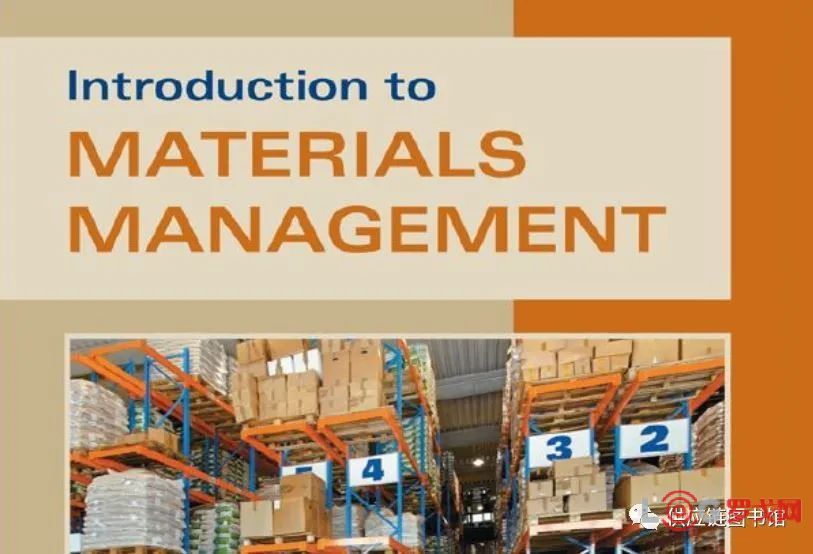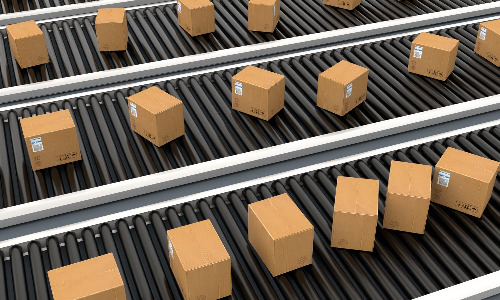

 [罗戈导读]因复习时使用的IMM教材英文版,笔记同为英文版,偶尔穿插中文注释,及相对原教材的摘取删减。
[罗戈导读]因复习时使用的IMM教材英文版,笔记同为英文版,偶尔穿插中文注释,及相对原教材的摘取删减。


三年前考了CPIM-Part1,当时基于IMM教材框架写了一份摘要笔记,分享在这里。
其实IMM此书几乎囊括了供应链管理从计划释放到寻源、制造、物流运输、仓储环节的各个方面,对于不打算考取CPIM证书,只是想对于供应链管理有一个初步的知识体系搭建也很有益处,希望此分享对供应链友人们有所帮助,也期待和大家互动交流。
因复习时使用的IMM教材英文版,笔记同为英文版,偶尔穿插中文注释,及相对原教材的摘取删减。
Note: S&OP focusnot on actual schedule production, but producing a high-level plan for the useof company resources, including production resources, human resources, salesresources, financial resources and all other functions in company.
Purpose of production plan: establish production rates that will accomplish the objectives of the strategic businessplan.
Making production plan
1) establish production groups
->based on thesimilarity of manufacturing process
->the demand forgood translate into the demand for capacity.
2)basic strategies
->chases trategy: demand matching strategy
->production leveling
->subcontracting
->hybrid strategy(组合)
3)operation environment
3.1)Make to stock production plan
->目标:maintain required inventory levels
3.2)make to order production plan /assemble to order
->目标:maintain the planned backlog
4)Resource planning
->生产计划做完后,must be compared to the exsitingresources
->resourcebill
Objectives: to balance the demand (priorities)set by the market plan with the availability of materials, labor and equipment(capacity) of manufacturing.
MPS isthe planned build schedule for manufacturing.
Relationship to production plans
->基于prodcution plan 的forecast, projected available, openinventory(初始库存) and strategy
(书中使用表格计算转换productionplan为MPS的过程逻辑)
3 steps to develop a master production schedule
->1. a preliminary MPS 初始主排程计划
->2.RCCP:
Check whether critical resources(包括bottleneck resources, labor, critical materials) are available for step (1) MPS.
使用resource bill(单位产品的产能需求)与MPS矩阵相乘,可以得到RRCP
->3.resolve diff between 1 & 2
Resource use
Customer service(due date满足交货期否?)
Cost
Master schedule decisions
->take place where the smallest number of product options exist.
Production planning, master scheduling and sales
->production plan(产品族级别) provide framework for MPS(End items)
What production can and will do
MPS & Delivery promises
ATP forperiod 1= on hand inventory - customer orders due before next MPS
ATP forperiod 2=MPS scheduled receipt - customer orders due before next MPS
->Note: 这种计算方法假设the ATP will be sold before the next scheduled receipt arrives.
Before the demand time fence
PAB=prior period PAB or on-hand balance + MPS - customer orders
After the demand time fence
PAB=prior period PAB + MPS - max{customer order, forecast}
Objectives: determine requirements & keeppriorities current
Input:
->MPS
->Inventory records: planning factors & inventory record file
->BOM:
多种形式,eg. Multiple level, single level, planning bill
Where-used report(cs15 T-Code) & pegging report (有需求对应的cs15)
Usage
MRP Process basic techniques
->Exploding and offsetting
Planned order receipt
Planned order release = planned order receipt* (1 - scrap factor)
->Gross and net requirements
Net = Gross - available inventory
The planned order release of the parent becomes the gross requirements of the component
->Releasing orders
Scheduled receipts: when the authorization to purchase or manufacture is released, the planned order receipt is cancelled, a scheduled receipt is created in its place
Net= gross- scheduled receipts - available inventory
->Capacityrequirements planning
->Low-levelcoding and netting
Use MRP
Material planners work with 3 types of orders
Planned orders
Released orders
Firm planned orders
Managing MRP
Priority
Bottom-up replaning: actions to correct for changed conditions should occur as low in theproduct structure as possible
Reducing system nervousness: one method is firm planned orders
Capacityis a rate of doing work, not the qty.
Capacity required(load)
Capacity management
Capacity planning
Capacity control
Capacity requirements planning
->inputs:
Open order file
Material requirements plan
Routing file
Workcenter file
Shop calendar: eg. Move time/wait time/ queue time/ lead time
Capacity available
->affected by
Product specifications
Product mix
Plant and equipment
Work effort
->measuring capacity
If 产品种类少:a unit common to all products
If 产品种类多:standard time
->two methods to check capacity available
1)measurements: demonstrated (measured ) capacity from historical data, is averate, not max, output. = sum of standard hours per time bucket/ number of time buckets
2)calculated or rated capacity = (available time) * (utilization) * (efficiency)
Capacity required (load)
Determine the time needed for each order at each work center.
Obtain load from summing up the capacity required for individual orders
Scheduling orders
->backscheduling
需要的信息:queue, wait, move time, workcenter capa., qty, due date, operation sequence, setup, run time.
信息来源:order file, route file, work center file
Process
Making the plan
负荷与可用产能不同时,可采取的措施
Eg.Overtime/ shift + & -/ alternate routings/ subcontract…
Manufacturing systems
->flow manufacturing: (Repetitive manufacturing /Continuous manufacturing)
Routing fixed
Work center produce a limited range of similar products
WIP little, throughput times low
Capacity is fixed by line
->intermittent manufacturing
Work flow not balanced
Work centers are usually grouped according to function
WIP large, throughput times long
Capacity difficult to predict
->project manufacturing, (eg, shipbuilding)
Data requirements
->planning files
Item master file 物料主数据
Product structure file (BOM file)
Routing file
Workcenter master file
->control files
Shop order master file
Shop order detail file
Order preparation
Check material availability & capacity availability
Scheduling techniques
Forward Scheduling : decide the earliest delivery date
Backward scheduling: determine when an order must be started
Infinite loading & finite loading
Operation overlapping 重叠
MLT(manufacturing lead time)is reduced by the overlap time and the elimination of queue time.
Costs involved: move cost; increase queue time of other orders
重点: operation time B shorter than operation time A =>confirm sublot
Operation splitting 拆分
MLT is reduced by several lots running on two + machines
重点: setup is low; a suitable workcenter is idle; one operator run several machines
Load leveling
Scheduling bottlenecks
Throughput
Some bottleneck principles
Manage bottlenecks
Time buffer before bottleneck
Control rate of material feeding the bottleneck
Provide the needed bottleneck capacity (eg. 减少准备时间等等)
Adjust load (eg.改工作中心,外包),强调 reduce load
Change schedule
Theory of constraints & drum-buffer-rope
-manage the constraint
-improve the process
-scheduling with the theory of constraints
Drum: pace of production
Buffer: a time buffer established in front of the constraint
Rope: pull production to the constraint for necessary processing
-control: queue time 占比最大,是重点控制方向
Input/output control
Priority setting
-Priority:operation sequencing
Control of priorities is exercised through dispatching
Dispatching rules
FCFS
EDD(ealiest job due date)
ODD(ealiest operation due date)
SPT(shortest process time)
CR(Critical ratio) = (due date - present date)/ lead time remaining
CR<1, behind schedule
CR=1, on schedule
CR>1, ahead of schedule
CR<=0, already late
Introduction
->purchasing objectives
The required qyt. & quality
The lowest cost
Service and delivery
Good supplier relations & developing potential suppliers
Minimize the impact on the environment
->outsourcing
->purchasing cycle
Receiving and analyzing PR
Selecting suppliers
Requesting quotations
Determining the right price
Issuing purchase order
Following up & delivery
Receiving and accepting goods
Approving invoice
Establishing specifications
Qty. requirement
Price requirement
Functional requirements: functional specifications & quality ; value analysis
Functional specification description
By brand: usually have price levels higher than non-branded items
By specification: physical and chemical characteristics/ material and method of manufacture/ performance
By engineering drawings
Miscellaneous
Selecting suppliers
->sourcing: sole/multiple/ single
->factors:technical ability/ manufacturing capa/ reliability/ after-sales service/location/ JIT capabilities/ price/ other
->identifying
->finalselection: ranking method
Price determination
->basis for pricing: fixed cost, variable cost
->competitive bidding竞价
->price negotiation
Impact of MRP on purchasing
->purchasing可分为2种类型的行为:
1)procurement
2)supplier scheduling & follow-up
->planner/buyerconcept
->contract buying: 供应商得到 a copy ofMR to confirm furture demands
->supplier responsiveness & reliability
->close relationship with suppliers
->EDI
->VMI
->internet& intranet & extranet
Environmentally responsible purchasing
->reduce-reuse-recycle
Expansion of purchasing into supply chain management
->信息流, 现金流, 物料流, 维修流
->CRM& SRM
Demand management 4 main activities
->forecasting
->order processing
->making delivery promises
->interfacing between manufacturing planning & control & market
Characteristics of demand
->demand patterns
Trend
Seasonality
Random variation
Cycle
->stable vs dynamic
->dependent vs independent demand
Principles of forecasting
->wrong
->includean estimate of error
->more accurate for families/ groups
->more accurate for nearer time periods
Collection & preparation of data
->record data in same terms as needed for forecast
->record the circumstances
->record the demand separately for different customer groups
Forecasting techniques
->qualitative techniques: eg. Business trends/ potential demand, senior management
->extrinsic techniques
->intrinsic techniques (end-item)
Some intrinsic techniques
->moving average: 优点:stabledemand, filter out random fluctuations, 缺点:computerstorage high
->exponential smoothing: 优点:deal withstable item, short-range forecast,缺点:not work well when demand, low, intermitent
Seasonality
->seasonal demand = (seasonal index) * (average demand)
->deseasonalized demand = (actual seasonal demand) / seasonal index
->计算步骤:
Use de-seasonalized data to forecast
Calculate desonalized demand base forecast
Calculate seasonal forecast using seasonal index
Tracking forecast
->error
Bias & random variation
->MAD(Mean Absolute Deviation)
->tracking signal = forecast error代数和/MAD; 作用:measure the quality of forecast todetermine whether to adjust forecast
->contingency planning
->P/DRatio
->Aggregate inventory management: according to classification & cuntion
->Item inventory management: eg. ABC/EOQ, order system
Inventory & material flow
->R.M/WIP/ Finished goods/Distribution inventories/ MROs(Maintenance, Repair,Operational Supplies)
Functions of inventories
->anticipation inventory: level production & reduce cost of changing production rates
->fluctuation inventory: (safety stock)
->lot-size inventory(cycle stock): quantity discounts; to reduce shipping, setup costs
->transportation inventory(pipeline/ movement inventories)在途库存
->MROs
Objectives
->maximum customer services by protecting against uncertainty
->min inventory investment
->operating efficiency
Build up inventories between different rates of production
Level production and build anticipation inventory for seasonal products
Allow manufacturing to run longer production runs
Allow manufacturing to purchase in larger qty.
Inventory cost
->item cost
->carrying cost (capital cost/ storage cost/ risk cost)
->ordering cost
->stockout cost
->capacity-associatedcost (eg. Overtime, hiring, extra shifts)
Financial statement and inventory
->balance sheet: Assets = liabilities + owner's equity
->income statement: Income = revenue - expenses
->cash flow analysis: show company's ability to pay off debt
->financial inventory performance measures
->methods of evaluating inventory (FIFO/LIFO/Average cost/Standard cost)
lot-size decision rules
lot forlot/ fixed-order qty.(EOQ)/ order n periods supply(POQ)
3种系统to determine when to order
Order point system (OP= DDLT +SS) DDLT: Demand during lead time; SS: safety stock
Periodic review system
MRP
Determining service level
->is adecision of senior management & company's cooperate and marketing strategy
Warehouse management
->objectives
->cost:capital cost & operating cost
->warehouse activities
->maxuse of space & effective use of labor and equipment
Cube utilization & accessibility
Stock location
Order picking & assembly
Physical control & security
Inventory record accuracy
Introduction
->channels of distribution
Transaction channel: the transfer of ownership
Distribution channel: the transfer or delivery of goods/services
->reverse logistics
Purpose: return, repair, remanufacture, recycling
Two main categories: asset recovery: actual products; green reverse logistics: package/ heavy metal
Physical distribution system
->activities/total-costconcept/ global distribution/3PL
Interfaces
->marketing(responsible for transferring ownership) & production
Transportation
Legal Types of carriage
Transportation cost elements
->line-haul costs(LHC)
->Pickup and delivery costs
->terminal handling
->billing & collecting
->transportation terms, incoterms
warehousing
->roleof warehouses: transportation consolidation/ product mixing/ service
Continuous improvements of products & processes
->ensuring employee involvement & empowerment
->focusing on customers as the ultimate definer of quality
->sustainability continuous improvement -> ongoing cycle
Lean tools & techniques
->Hoshin planning: use PDCA cycle
->Kaizen events
->valuestream mapping
->Poka-yoke
->5S
TQM & other quality tools
->quality principal approaches: transcendent quality/ product-based quality/ user-basedquality/ manufacturing-based quality/ value-based quality
->some quality tools
Check sheets/ pareto charts/ cause and effect diagrams/ flowcharts/ histograms/ statistical process control/ scatter diagrams

春节也送货?!超20家物流企业春节服务安排出炉!
1777 阅读
顺丰133亿件、中通340亿件、圆通266亿件、韵达238亿件、邮政180亿件……全年快递业绩出炉!
1614 阅读
2025开年跨境商家利润就被吞掉一大笔,海运费暴涨后又大跌为哪般?
1357 阅读中国物流集团2025发展战略发布
1270 阅读解码DHL全球化密码:物流企业出海启示录
1049 阅读AI 赋能供应链,从价值创造到未来引领
1023 阅读年营收49.6亿元的海康机器人IPO有新动静,透露了几个关键信息
998 阅读工业工程界的“诺贝尔奖”揭晓,顺丰为2025年唯一中国代表
935 阅读上线首日,京东快递凌晨即送达手机国补第一单!已支持全国所有上线省市!
925 阅读连续2年夺魁!日日顺荣膺LOG供应链物流最具影响力品牌奖
886 阅读